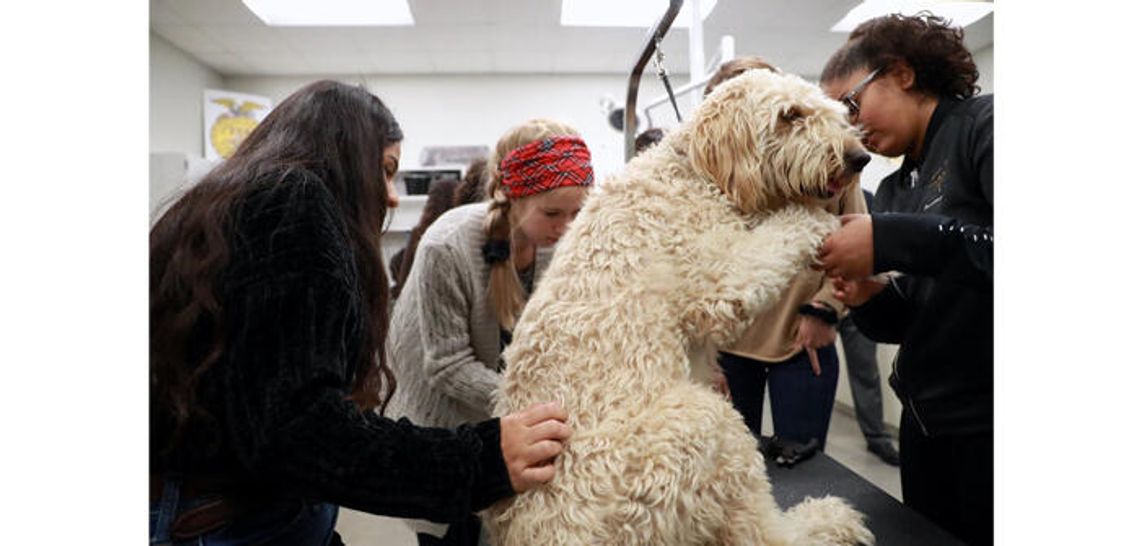Like everything else along the Innovation Corridor, the state of public education is in flux. Given the pace of growth Hays County is experiencing, it’s difficult just to keep up, much less get ahead.
To counter that, educators and business people meet annually for an Education Summit sponsored by the Greater San Marcos Partnership (GSM), a public/private initiative that pursues economic development in Hays and Caldwell counties.
One of the speakers at this year’s summit was Dr. Eric Wright, superintendent of schools for the Hays CISD and a man dedicated to providing avenues and incentives for students that reach far beyond the doors of the schoolhouse.
“The school districts throughout the Greater San Marcos region are where we are cultivating the talent that represents our future workforce,” said Adriana Cruz, president of the GSMP. “The work we do now to inspire, educate and guide our children for future career opportunities will have a direct impact on the companies we attract and the resulting economic growth along the Texas Innovation Corridor.”
“It was an outstanding event,” Wright said the day after the summit, which was held at the Embassy Suites in San Marcos. Bringing together educators and business leaders, he said, allowed for both to “gain insight and understanding about how we can leverage resources and partnerships that will help our students gain insight into potential careers and also help businesses gain future employees.”
Along with Wright, superintendents in attendance included Michael Cardona from the San Marcos CISD, Nola Wellman from Dripping Springs (interim), Mark Estrada from Lockhart and Erin Warren from Luling.
All were on the same page when it comes to properly preparing public school students for the world of work. “We kind of repeated ourselves,” Wright said.
While students approaching graduation used to face deciding on whether to pursue higher education or a vocational trade, Wright said they are now encouraged to do both. “We want all of our kids to have some type of post secondary education,” which could include an industry certification. If they can achieve that during their junior or senior year in high school, they have skills that are immediately marketable.
“If you have some sort of certification, say as a nurse’s assistant, you can start earning money. That helps you and helps your family so you can further your education,” something that is particularly attractive as the student loan crisis continues to spiral out of control.
Days before the summit, the superintendents and representatives of the GSMP toured Johnson High School, the Hays CISD’s newest facility and one that puts an emphasis on career preparation.
While nearly all the career prep programs available at Johnson are also taught at Lehman and Hays high schools, Wright said the “setup at Johnson is very unique.”
“Lots of times, schools put career and technology programs in the back of the building, not front and center,” he said. “At Johnson, it’s the first thing you see when you enter the building.”
Among programs offered by the district are cosmetology, culinary arts, veterinary technician, welding, auto technology, construction trades, biology/medicine and broadcast/multi-media.
There’s also an aerospace program that’s unique to Johnson, a Formula 1 engineering program at Lehman and robotics at Hays High. All three of those programs are open to students from any of the three high schools.
“There’s nothing that engages students more than career tech programs because they are hands-on,” Wright said, “and it always culminates in a product.” Such a background builds skills that “will always be available to draw from,” no matter where career paths eventually lead.
“Ultimately our schools are the people’s schools,” Wright said. “Their money funds our schools, their kids go to our schools.” He added, though, that one of the challenges Hays schools face is getting word of all the programs available out to parents. “Lots of times, it’s enticing for a 15-, 16- or 17-year-old to get a job making $12 an hour — but if you don’t have the education and training you might be at that job for the rest of your life.”
To bring parents into the fold, Wright said the district sponsors “Navigate your Future Night” for parents and also other outreach events. One in the works is to use broadcast/multi-media students to produce short video clips targeted at parents.
The district also stresses internships, more than 100 in fact. “This past year we had approximately 4,000 students earning — out of 6,600 students” in Hays and Lehman high schools and the Live Oak Academy (Johnson didn’t open its doors until this fall).
Teachers are also exposed to the world outside academia each summer through an externship program where teachers are placed in local businesses. “Most of us in education never work in industry,” he said. Just last year, more than 20 teachers participated.










